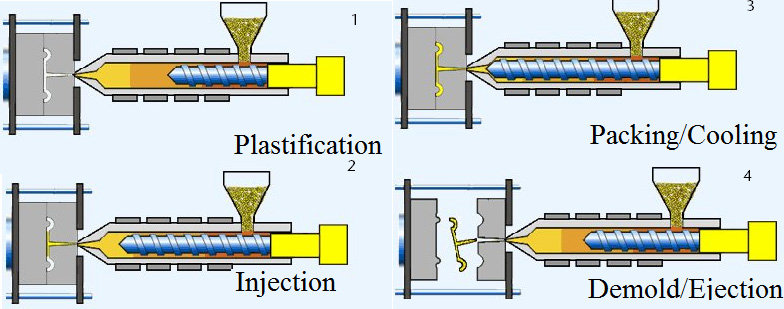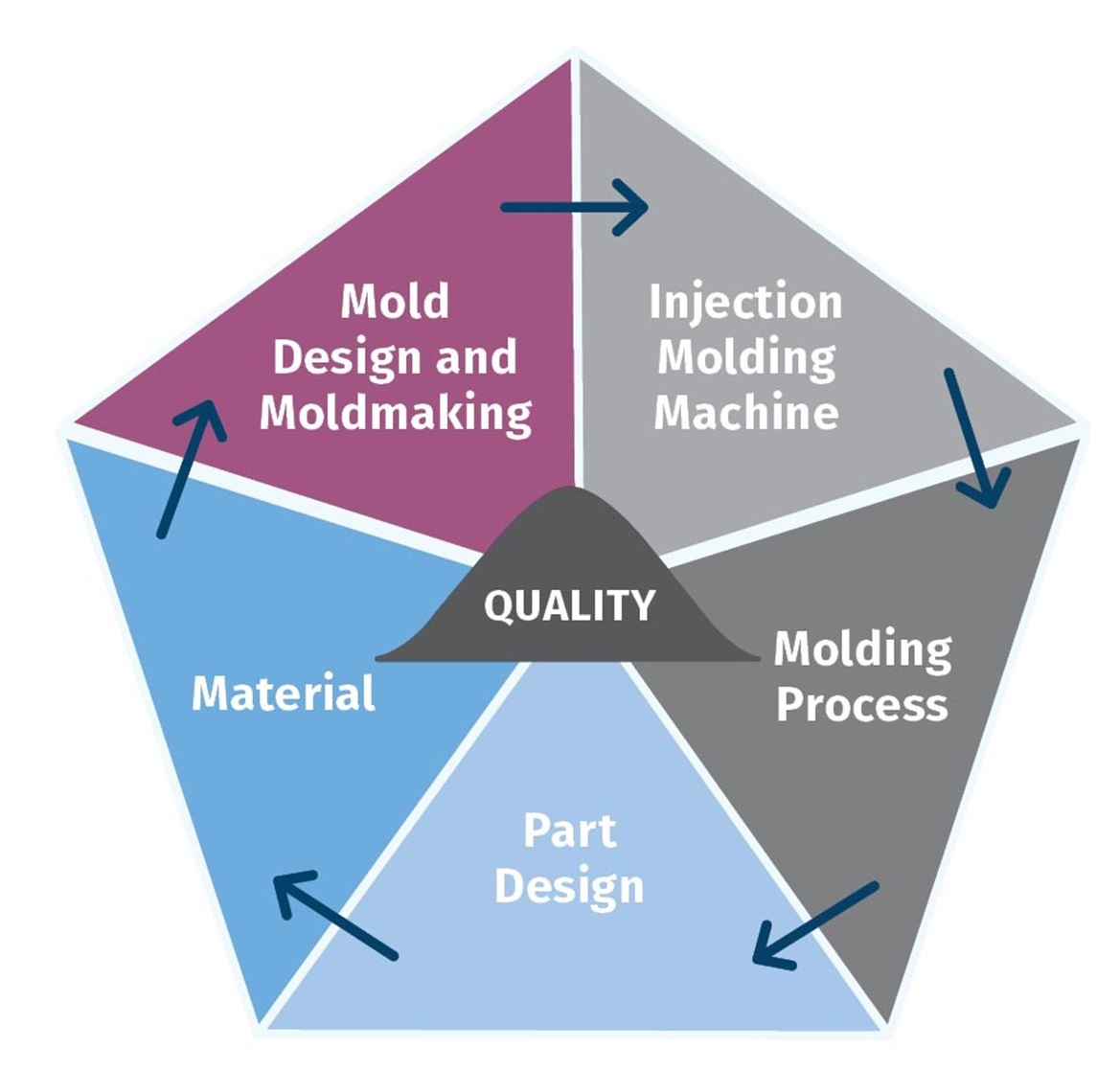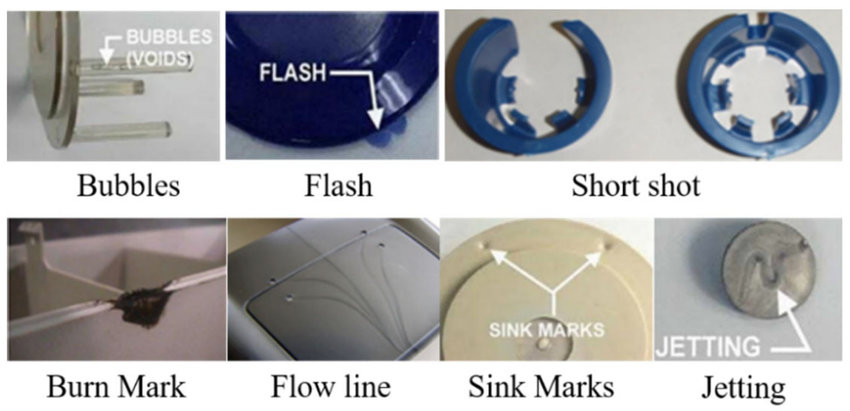Injection molding is among the most common manufacturing processes for plastic parts. However, it is a costly affair. Most of the expense comes from the development of the mold itself, which is primarily responsible for giving shape to the material. This is an integral job and requires the utmost precision and accuracy. That’s why the mold needs to be perfect for the best result.
Injection mold life expectancy is the measure of exactly how many times a mold would deliver the best results before undergoing permanent deformation. Numerous factors affect it. However, the most prominent ones are the mold class, operating conditions, environment, maintenance, and type of materials.
This text will take a brief look at the basics of injection mold lifespans and discuss the factors that affect performance and longevity for the best results.
How Long Do Injection Molds Last?
One of the most significant factors that affect the longevity of an injection mold is its mold class. The Plastics Industry Association defines the characteristics of each class and maintains control over the standards. There are five common plastic injection mold classes.

Mold Class 101
Class 101 is for the highest quality materials and has a mold life expectancy. However, only a few industrial applications use this class because of how expensive it is. Generally, mold class 101 is for projects with high-level requirements with expected cycling times of 1,000,000 or more. It’s also for harsh environmental conditions and corrosive base materials that can damage other mold classes.
Mold Class 102
The next choice is very close to class 101 but is not that expensive. Naturally, this means that class 102 doesn’t have the same life expectancy and the ability to sustain harsh environments. However, it works perfectly till one million cycles and is generally an excellent choice for medium to high-volume production.
Mold Class 103
This is the average mold according to industry standards. Class 103 can have a maximum lifespan of 500,000 cycles and is a great choice for medium-level productions.
Mold Class 104
This is a lower quality class that works well till 100,000 cycles. Class 104 molds are also unable to handle abrasive materials because they can damage easily and have many mold maintenance requirements.
Mold Class 105
Class 105 molds are the least expensive mold class but have the lowest life expectancy. Class 105 will fail in 500 cycles and is a general choice for prototyping projects and other low-volume applications.
Factors That Affect Injection Mold Lifespan
Apart from mold class and the material, numerous factors affect the overall lifespan of an injection mold. How long an injection mold lasts depends on how well it is maintained. Preventive maintenance along with caring about the material, time, and other environmental factors during the lifecycle of tooling. These can significantly increase the overall injection mold life expectancy.
Here’s a look at some of the most important factors that can affect the lifespan of an injection mold.
Operating Environment
The class tells you the maximum number of cycles molds can operate, but not all of them last that long. One of the biggest reasons behind it is the overall environment.
A cleaner environment with little to no exposure to corrosive elements can allow the molds you last for the longest time. However, the molds will fail very early in the opposite case. Harsh elements, debris, and dust will cause additional wear on the mold and reduce the overall performance.
The Time Between Each Production Run
Any production run creates a lot of heat and the mold has to sustain all the thermal stresses that the process generates. The average time between the production runs allows the mold to cool down before the next process and maintains the thermal stresses to a sustainable level.
However, consistently using the same mold without leaving ample time between may cause damage to the mold because of undue stresses and other factors.
Production Cycle Time
Commonly, faster, high-speed production can cause the mold to fail early. Naturally, the amount of stress on the mold during a slower process is less than what it is for faster processes. Faster settings can also cause an error in clamping, premature opening of vents, and decoupling. And other similar mistakes that can affect both the quality of the product and the expected injection molding tool life.
Materials of Injection Mold Tooling
Materials for injection molding play an integral role in determining the overall life of the mold. Naturally, materials like steel would last longer but will be expensive as well. On the other hand, softer materials like Aluminum would be faster, and more cost-effective at the expense of quality and lifespan.
Another important element is the ability of the mold to handle corrosive elements. Aluminum creates a natural oxide layer on its surface, which gives it an excellent ability to resist exposure to a lot of corrosive materials. On the other hand, steel also performs well when it comes to handling corrosive elements. However, it is still behind Aluminum and is not the natural choice for such cases.

Mold Surface Treatment
In the injection molding process, the stresses are the highest at the ejection of the part. The mold’s surface plays an integral role in determining how simpler ejection would be. In many applications, experts recommend using PVD coating on the surface to facilitate the ejection process.
Similarly, keeping the clean and smooth can also help a lot even if there is no PVD coating. This injection molding finishing is a part of the regular maintenance protocol for molds used in injection molding. A smooth and clean surface ensures that the product is free from any defects and increases mold life expectancy.
Proper Mold Structure Design
Design elements such as the thermal balance, the gating system, and others can help injection molds operate to their full potential. Thermal stresses are among the most common causes of mold failure and introducing mold design elements like proper vents to reduce them can significantly increase the likelihood of increasing the mold life.

Similarly, adding elements like a push guide or any other component to facilitate the ejection can also reduce the overall stresses on the mold and allow it to last for a long time.
Preventative Maintenance
Naturally, elaborate designs, surface treatments, and all other elements will lose their effectiveness with time and may require some repairs. With an effective preventive maintenance protocol, injection molds can operate up to their life expectancy even after some damage.
Preventive maintenance can also save a lot of resources as molds can be very expensive. Therefore, regularly inspecting, cleaning, stripping, and repairing them is more cost-effective even if the mold has to be out of service for some time.
Defects that Shorten Injection Mold Expectancy
Even the cleanest environments that follow every protocol to ensure the maximum life expectancy of the injection mold deal with common defects.

Some of the most common mold defects happen because of the mismatch between the suitable material and mold type or due to the inexperience of the operators. In both cases, these flaws can have a significant impact on the production and the life expectancy of the mold.
Flow Lines
Flow lines are the result of a variation in the plastic’s cooling speed that happens because of impurities and some other factors like the variation in the thickness of the part.
Sink Marks
This flaw is extremely common in parts with edges or crevices. Sink marks are the result of rapid cooling in one part of the mold during the flow which results in craters or small depressions on the part. Such parts become very difficult to eject and may damage the mold during the process.
Burn Marks
This is a common flaw during high-speed production. Burn marks happen due to excessive heating in some parts of the mold, which renders both the part and the mold useless in some extreme cases.
Delamination
Delamination happens when the part splits into layers during production. This flaw creates an abrasive surface that can damage the cavity or other parts of the mold during ejection.
Flash
Flash is the excessive plastic that comes out of the mold through the sides of the parting line. Generally, the sides of the mold remain vulnerable and open to damage as the plastic can stick to it and cause problems if it has a corrosive element.
Steel vs Aluminum Injection Molds
When it comes to the longevity of injection molds, there is a lot of debate on whether Aluminum or Steel is the right choice. The correct answer depends on the specific parameters of the application, the available budget, and much more. However, Aluminum is generally not preferred for injection molds despite it being softer and more cost-effective.
The main reason behind it is longevity. Aluminum is an excellent choice for class 105 molds that are for prototyping. However, high-volume production requires durability that Aluminum can’t deliver. Steel, on the other hand, has that factor and can work perfectly for high-volume production.
Create Solid Injection Molds with RapidDirect
The molds are often the most expensive part of any injection molding set up and require the utmost consistency, precision, and durability. RapidDirect is a perfect injection mold tooling services partner that can deliver all that in the shortest time and at the most competitive rates in the market.
The team at RapidDirect has worked globally with many manufacturers and can deliver solid injection molds depending on the project’s requirements. From material choice to the introduction of design elements that the project might need, we can deliver everything with only a few clicks.
To get started, simply go to RapidDirect’s proprietary online manufacturing platform, and upload the details of your mold design and other information to get started. A representative will get back to you with a rapid quotation and other details very soon.


